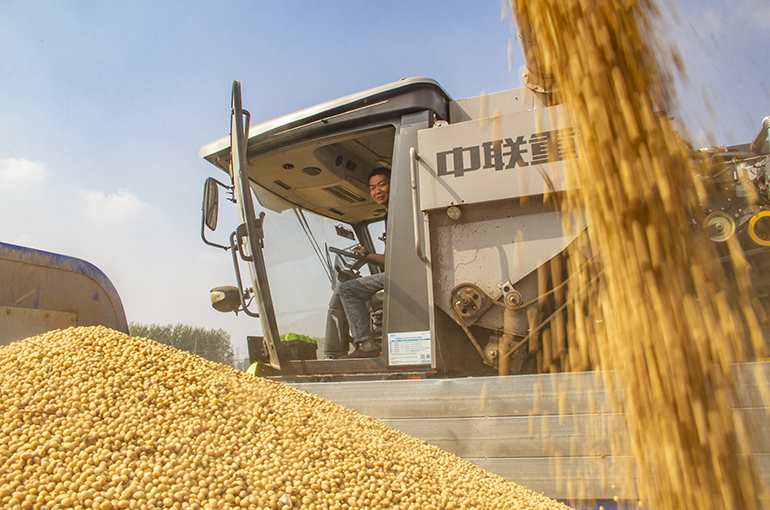 Chinese Soybean Market Holds Up as US Imports Plummet
Chinese Soybean Market Holds Up as US Imports Plummet(Yicai) May 6 -- Despite China’s soybean imports from the United States plunging 97 percent due to higher tariffs, the Chinese market for the legume remains stable thanks to substitution, lower consumption, and increased domestic production.
China bought 1,800 tons of US soybeans in the week ended April 17, down from 72,800 tons in the week before, according to data from the US Department of Agriculture. But after prices surged in early last month, they quickly fell back, demonstrating the market's ability to self-regulate.
The Trump administration announced an additional 125 percent tariff on Chinese imports on April 10 to which China responded by increasing its additional levy on US imports to 125 percent from 84 percent, effective April 12. That came on top of China's existing 10 percent base tariff on soybean imports.
China's three core strategies to ensure the healthy development of the soybean market are substitution, reduction, and increased production, Zhang Zhixian, director of the China Grain Yida Research Institute, told Yicai.
Record-high soybean production in South America allowed many Chinese orders to shift from the US to South America, Zhang said, adding that many leading Chinese feed enterprises are seeking to reduce soybean meal consumption to lower costs and mitigate supply risks.
Moreover, China's soybean production has grown through intercropping, breeding programs, and other methods, with the country gradually improving its soybean self-sufficiency rates, Zhang noted.
Soybeans are China’s least self-sufficient major agricultural product, as the country imports more than 80 percent of its needs.
Some Chinese soybean traders and crushers are stepping up the shift toward Brazil, while others are turning to domestic products to tackle rising import costs, according to Chen Yijuan, a soybean import analyst at the Shanghai Steel Union's agricultural products division.
The Chinese soybean market is undergoing a "tariff-driven" supply chain restructuring, Chen said. While China is expected to improve its soybean self-sufficiency with policy support, it will still have to continue imports to balance demand in the short term, she added.
Market participants should monitor Brazil's shipping progress and domestic policy and weather risks, flexibly adjusting their procurement and inventory strategies, Chen suggested.
Despite that, China is not blindly expanding soybean cultivation as output is relatively lower than that of wheat and corn, Zhang said, noting that the country’s home-grown crop is enough to meet the demand for tofu and soy milk production.
For feed-grade soybeans, China has introduced policies encouraging reduced soybean meal consumption, with many feed companies taking voluntary measures. For example, New Hope Liuhe and Muyuan Foodstuff have developed and popularized technologies and solutions to reduce and substitute soybean meal in feed.
China's soybean imports plunged to a 17-year low in March, according to the General Administration of Customs. Chen attributed the decline to delayed Brazilian soybean shipments and Chinese mills cutting orders from the US in anticipation of increased tariffs.
Editor: Futura Costaglione